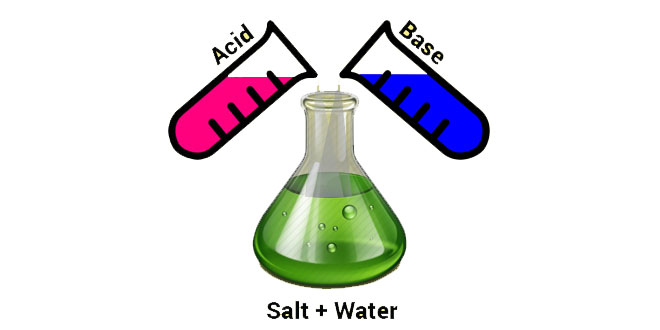Question: Neutralization reactions play an important role in our daily life. Support the statement with at least two examples.
Answer: The reactions in which acids react with bases, resulting in the formation of salt and water, are called neutralization reactions.
Following are some neutralization reactions that we observe in our daily life:
- In the treatment of ant sting: Some people are highly allergic to ant sting as it releases formic acid. It is neutralized by rubbing moist baking soda (sodium bicarbonate) or calamine solution, which contains zinc carbonate on the effected area.
- In the treatment of indigestion: Hydrochloric acid secreted in the stomach helps in the digestion of food. However, its excess secretion could lead to acidity and indigestion. Milk of magnesia is used to neutralize the acid.
- In the treatment of soil: Slake lime or quick lime is used to neutralize the acidity level of the soil. if the soil is too basic fertilizers made from vegetables and fruits which are acidic in nature are added to the soil.
- In the treatment of the sewage waste: The waste of many factories contain acids. Therefore slake lime (Calcium hydroxide) is often used to neutralize this acidic waste. It removes the acidic contents of the industrial waste and not the chemical.
- In the treatment of acid burn: During acid burns, the affected part of the body should be cleaned with cold water and a dilute solution of baking soda should be applied. It acts as a neutralizing agent to make it harmless. the solution should be dilute, otherwise it can harm the affected area.
Question: How will you prepare a dilute acid from a concentrate acid?
Answer: Depending upon the amount of water present in acids, they are categorized into concentrated and dilute acids.
To prepare a dilute acid from a concentrated acid:
Material required: Conical flask, concentrated hydrochloric acid, distilled water, a dropper and a glass rod.
Procedure: Take about 50 ml of distilled water in a clean conical flask. Using a dropper, add the concentrated hydrochloric acid (kept separately in a glass beaker) gently along the walls of the conical flask. Slowly stir the contents with the help of a glass rod in order to mix them. During the process of dilution of concentrated hydrochloric acid, heat is produced. This can be felt by touching the conical flask as the walls of the flask become hot.
Question: State differences between acids and bases.
Answer: The difference is as follows:
 Class Notes NCERT Solutions for CBSE Students
Class Notes NCERT Solutions for CBSE Students



Such a nice app and I have learnt a lot of thing from it.